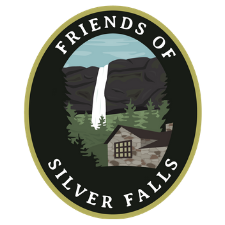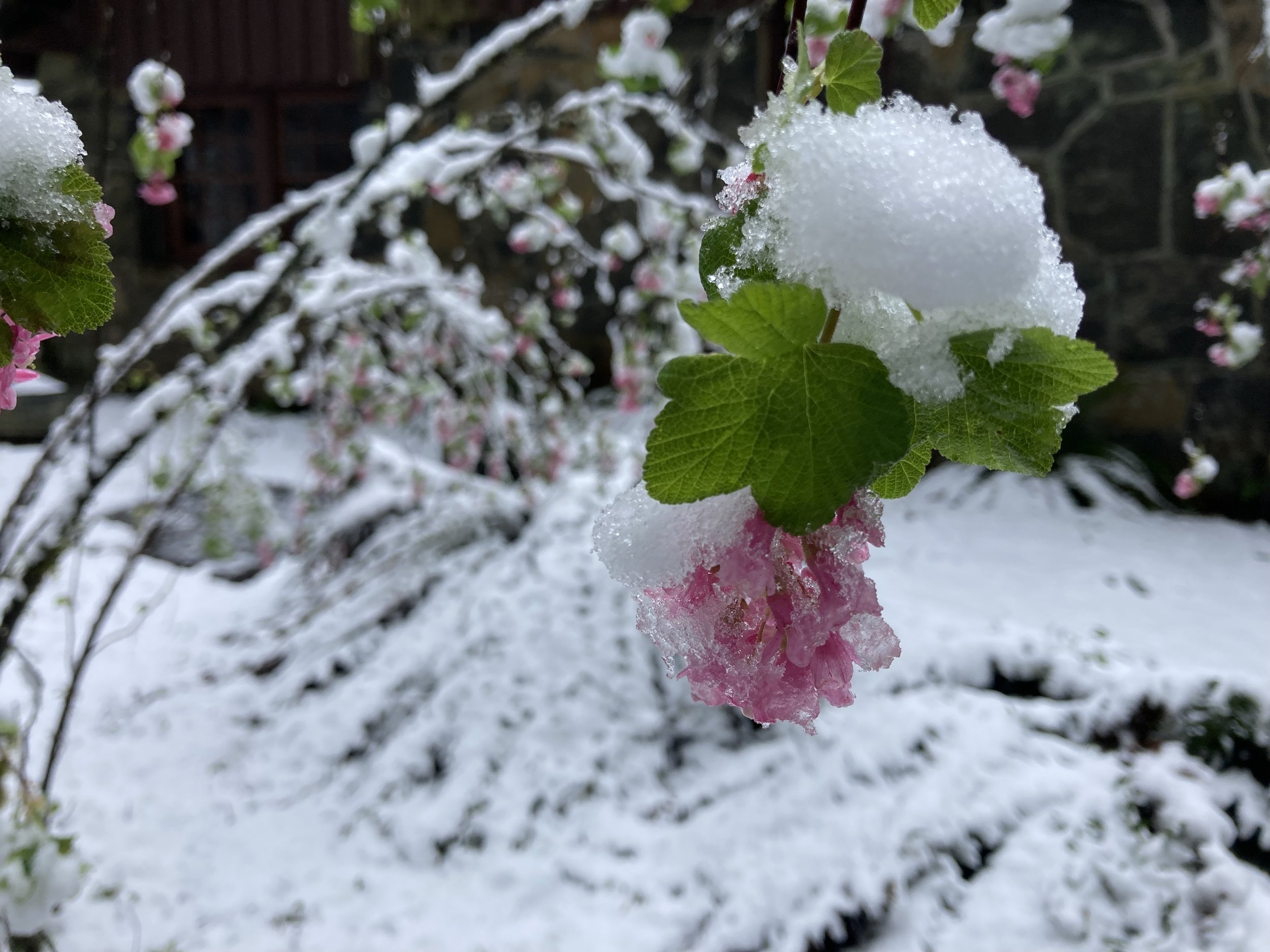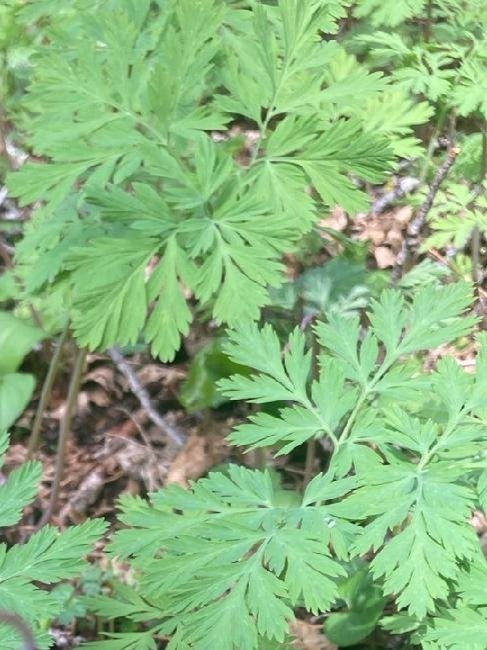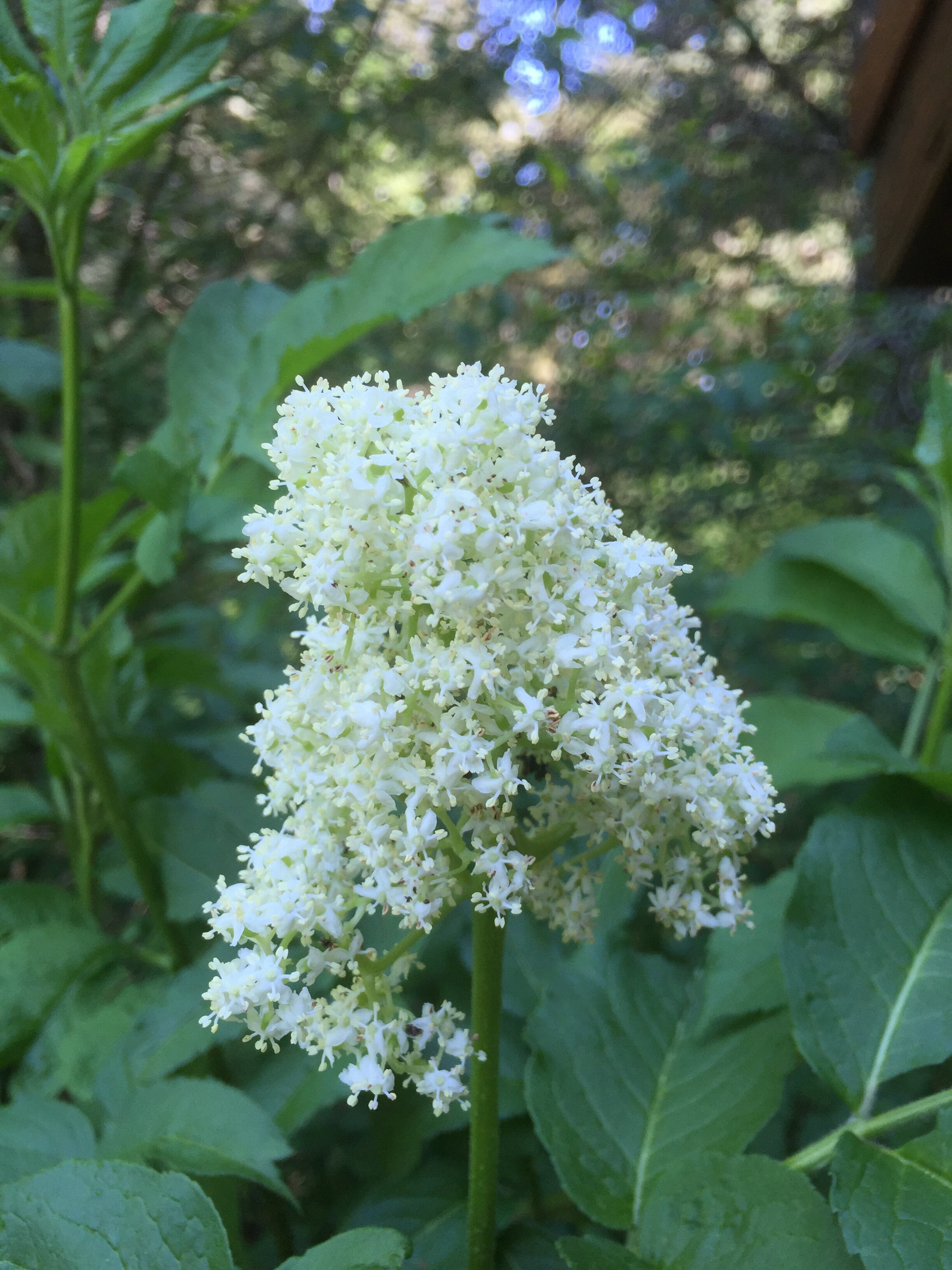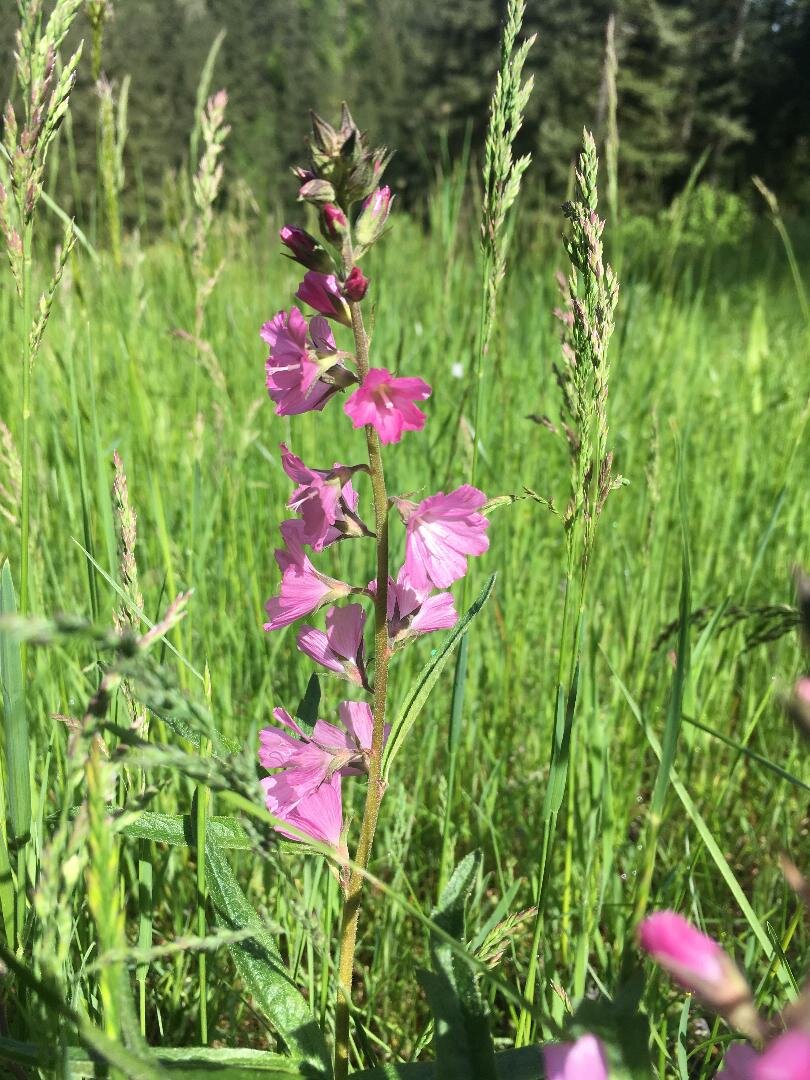Spreading from underground stems. Long basal stems hold pinnately compound deciduous leaves, with 3 leaflets in each of 2–3 divisions. Leaflets square to heart-shaped, top surface hairless, slightly hairy underneath, stem turning light in color with age. Flower stalk hairless, above leaves, bearing whorls of long-stalked, small, white, nodding flowers. Flowers in parts of 6, petals bent backward, flared out, looking inside out. Grows in deep shade in conifer forests at low to mid-elevations. The taller redwood ivy, V. planipetala, with hairy flower stalks, grows in California, southern Oregon. Siskiyou inside-out flower, V. chrysantha, in the Siskiyou Mountains, has yellow flowers.
Rarity: Locally Common
Flowering Time: Early Summer
Life Cycle: Perennial
Height: 8--16 inches
Habitat: Coastal, West-Side Forest
Found In: West Gorge, Crater Lake Np, Olympic Np, Mt. Rainier Np, N Cascades Np, Siskiyous
Native: Yes
Source: Spreading from underground stems. Long basal stems hold pinnately compound deciduous leaves, with 3 leaflets in each of 2–3 divisions. Leaflets square to heart-shaped, top surface hairless, slightly hairy underneath, stem turning light in color with age. Flower stalk hairless, above leaves, bearing whorls of long-stalked, small, white, nodding flowers. Flowers in parts of 6, petals bent backward, flared out, looking inside out. Grows in deep shade in conifer forests at low to mid-elevations. The taller redwood ivy, V. planipetala, with hairy flower stalks, grows in California, southern Oregon. Siskiyou inside-out flower, V. chrysantha, in the Siskiyou Mountains, has yellow flowers.
Rarity: Locally Common
Flowering Time: Early Summer
Life Cycle: Perennial
Height: 8--16 inches
Habitat: Coastal, West-Side Forest
Found In: West Gorge, Crater Lake Np, Olympic Np, Mt. Rainier Np, N Cascades Np, Siskiyous
Native: Yes
